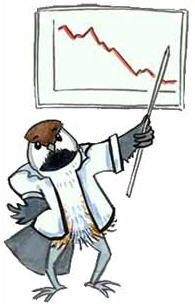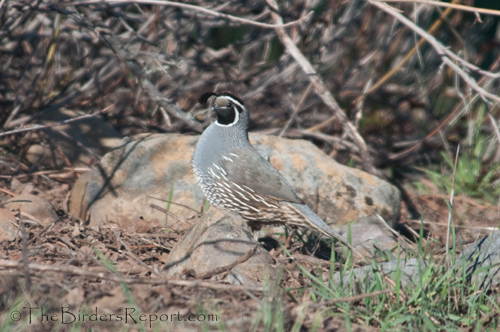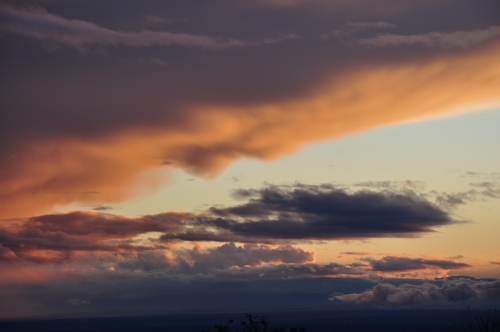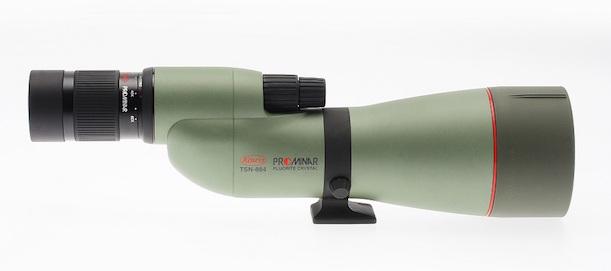|
Washington, D.C. – Secretary of the Interior Ken Salazar today released the first ever comprehensive report on bird populations in the United States, showing that nearly a third of the nation’s 800 bird species are endangered, threatened or in significant decline due to habitat loss, invasive species, and other threats.
At the same time, the report highlights examples, including many species of waterfowl, where habitat restoration and conservation have reversed previous declines, offering hope that it is not too late to take action to save declining populations.
“Just as they were when Rachel Carson published Silent Spring nearly 50 years ago, birds today are a bellwether of the health of land, water and ecosystems,” Salazar said. “From shorebirds in New England to warblers in Michigan to songbirds in Hawaii, we are seeing disturbing downward population trends that should set off environmental alarm bells. We must work together now to ensure we never hear the deafening silence in our forests, fields and backyards that Rachel Carson warned us about.”
The report, The U.S. State of the Birds, synthesizes data from three long-running bird censuses conducted by thousands of citizen scientists and professional biologists.
In particular, it calls attention to the crisis in Hawaii, where more birds are in danger of extinction than anywhere else in the United States. In addition, the report indicates a 40 percent decline in grassland birds over the past 40 years, a 30 percent decline in birds of aridlands, and high concern for many coastal shorebirds. Furthermore, 39 percent of species dependent on U.S. oceans have declined.
However, the report also reveals convincing evidence that birds can respond quickly and positively to conservation action. The data show dramatic increases in many wetland birds such as pelicans, herons, egrets, osprey, and ducks, a testament to numerous cooperative conservation partnerships that have resulted in protection, enhancement and management of more than 30 million wetland acres.
“These results emphasize that investment in wetlands conservation has paid huge dividends,” said Kenneth Rosenberg, director of Conservation Science at the Cornell Lab of Ornithology. “Now we need to invest similarly in other neglected habitats where birds are undergoing the steepest declines.”
“Habitats such as those in Hawaii are on the verge of losing entire suites of unique bird species,” said Dr. David Pashley, American Bird Conservancy’s Vice President for Conservation Programs. “In addition to habitat loss, birds also face many other man-made threats such as pesticides, predation by cats, and collisions with windows, towers and buildings. By solving these challenges we can preserve a growing economic engine – the popular pastime of birdwatching that involves millions of Americans – and improve our quality of life.”
“While some bird species are holding their own, many once common species are declining sharply in population. Habitat availability and quality is the key to healthy, thriving bird populations,” said Dave Mehlman of The Nature Conservancy.
Surveys conducted by the U.S. Fish and Wildlife Service and U.S. Geological Survey, including the annual Breeding Bird Survey, combined with data gathered through volunteer citizen science program such as the National Audubon Society’s Christmas Bird Count, show once abundant birds such as the northern bobwhite and marbled murrelet are declining significantly. The possibility of extinction also remains a cold reality for many endangered birds.
“Citizen science plays a critical role in monitoring and understanding the threats to these birds and their habitats, and only citizen involvement can help address them,” said National Audubon Society’s Bird Conservation Director, Greg Butcher. “Conservation action can only make a real difference when concerned people support the kind of vital habitat restoration and protection measures this report explores.”
Birds are beautiful, as well as economically important and a priceless part of America’s natural heritage. Birds are also highly sensitive to environmental pollution and climate change, making them critical indicators of the health of the environment on which we all depend.
The United States is home to a tremendous diversity of native birds, with more than 800 species inhabiting terrestrial, coastal, and ocean habitats, including Hawaii. Among these species, 67 are Federally-listed as endangered or threatened. In addition, more than 184 species are designated as species of conservation concern due to a small distribution, high-level of threats, or declining populations.
The U.S. Fish and Wildlife Service coordinated creation of the new report as part of the U.S. North American Bird Conservation Initiative, which includes partners from American Bird Conservancy, the Association of Fish and Wildlife Agencies, Cornell Lab of Ornithology, Klamath Bird Observatory, National Audubon Society, The Nature Conservancy and the U.S. Geological Survey.

|
 Are you concerned about climate change and how it effects the birds as well as the people on this planet? Here’s a fun way to see how much you know about birds and climate change, take the Birds and Climate Change Quiz!
Are you concerned about climate change and how it effects the birds as well as the people on this planet? Here’s a fun way to see how much you know about birds and climate change, take the Birds and Climate Change Quiz!

 White-faced Ibis photo by Larry Jordan
White-faced Ibis photo by Larry Jordan Oak Run Sunset photo by Brigitte Jordan
Oak Run Sunset photo by Brigitte Jordan


Social Media Connect